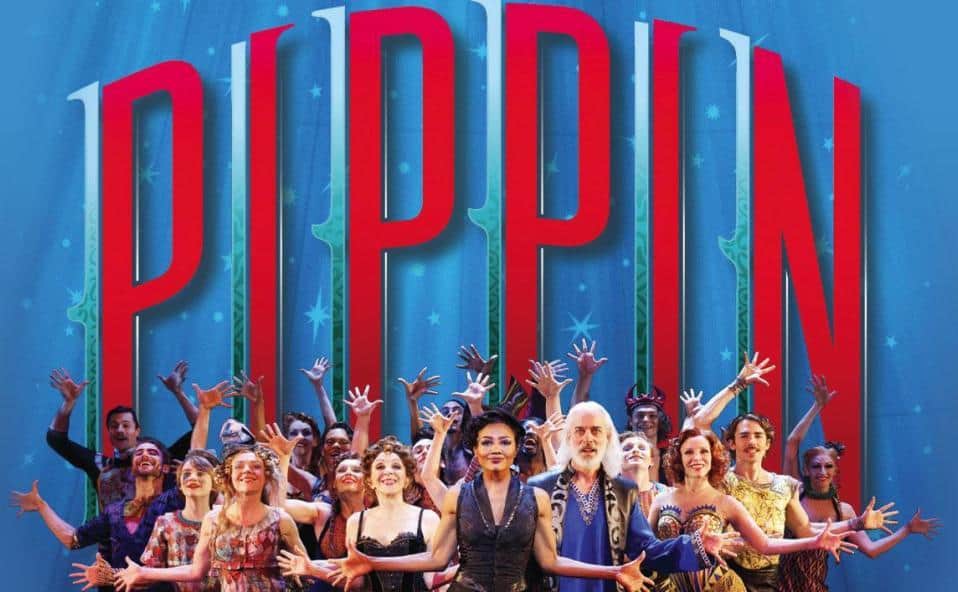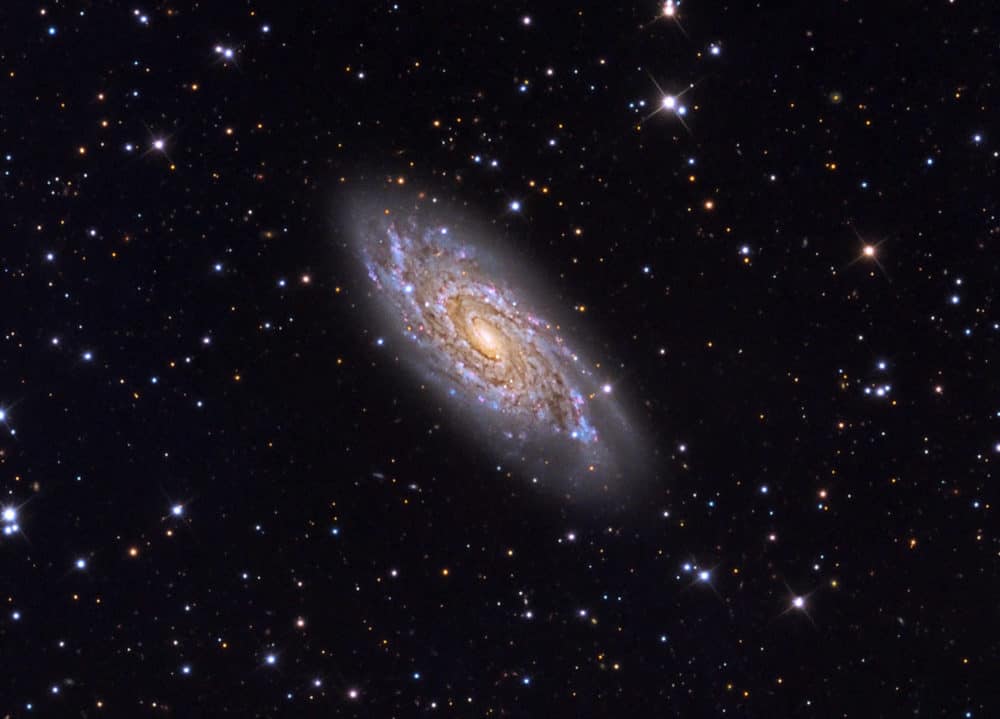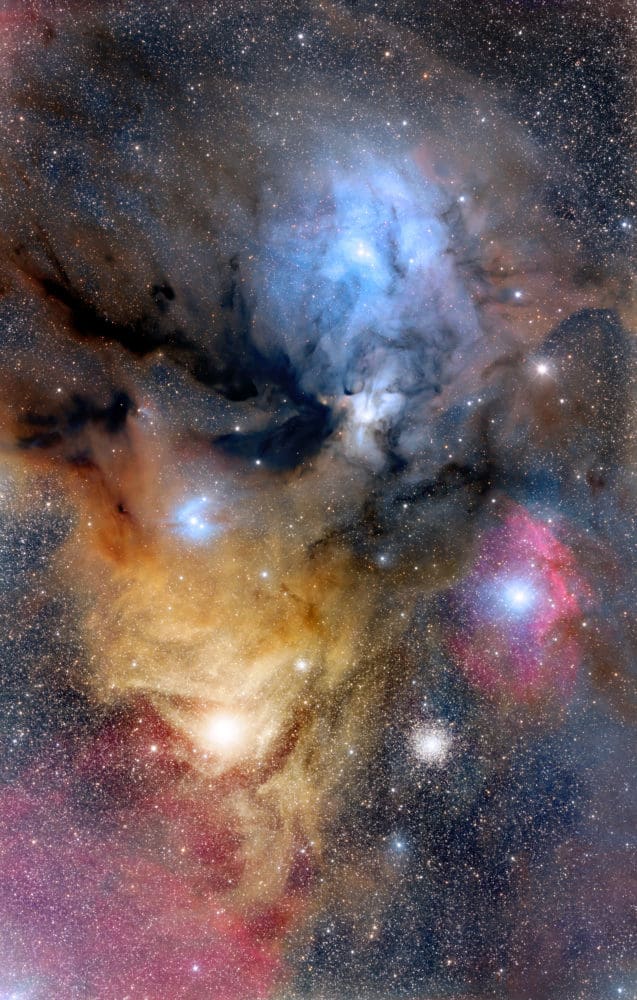Blog
Milton Brent Buckner (July 10, 1915 – July 27, 1977) was an American jazz pianist and organist, who in the early 1950s popularized the Hammond organ. He pioneered the parallel chords style that influenced Red Garland, George Shearing, Bill Evans, and Oscar Peterson. Buckner’s brother, Ted Buckner, was a jazz saxophonist. Milton Brent Buckner was born in St. Louis, Missouri. His parents encouraged him to learn to play piano, but they both died when he was nine years old. Milt and his younger brother were sent to Detroit where they were adopted by members of the Earl Walton band: trombonist John Tobias, drummer George Robinson (Milt) and reedplayer Fred Kewley (Ted).Buckner studied piano for three years from the age 10, then at 15 began writing arrangements for the band, he and his brother going on to become active in the Detroit jazz world in the 1930s.
Buckner first played in Detroit with the McKinney Cotton Pickers and then with Cab Calloway. In 1941 he joined Lionel Hampton‘s big band, and for the next seven years served as its pianist and staff arranger. Buckner was part of a Variety Revue of 1950 organized by Lionel Hampton at the famed Cavalcade of Jazz concert held at Wrigley Field in Los Angeles which was produced by Leon Hefflin, Sr. on June 25, 1950. He led a short-lived big band of his own for two years, but then returned to Hampton’s in 1950. In 1952 he formed his own trio and pioneered the use of the electric Hammond organ. He often played in Europe in the late 1960s. His last studio session took place in Paris on 4 July 1977.
Buckner died in Chicago, Illinois, at the age of 62.
more...Blind Boy Fuller (born Fulton Allen, July 10, 1904 or 1907 – February 13, 1941) was an American blues guitarist and singer. Fuller was one of the most popular of the recorded Piedmont blues artists with rural African Americans along with Blind Blake, Josh White, and Buddy Moss.
Allen was born in Wadesboro, North Carolina, one of ten children of Calvin Allen and Mary Jane Walker. Most sources date his birth to 1907, but the researchers Bob Eagle and Eric LeBlanc indicate 1904. After the death of his mother, he moved with his father to Rockingham, North Carolina. As a boy he learned to play the guitar and also learned from older singers the field hollers, country rags, traditional songs and blues popular in poor rural areas.
He married young, to Cora Allen, and worked as a laborer. He began to lose his eyesight when he was in his mid-teens. According to the researcher Bruce Bastin, “While he was living in Rockingham he began to have trouble with his eyes. He went to see a doctor in Charlotte who allegedly told him that he had ulcers behind his eyes, the original damage having been caused by some form of snow-blindness.” Only the first part of this diagnosis was correct. A 1937 eye examination attributed his vision loss to the long-term effects of untreated neonatal conjunctivitis.
By 1928 he was completely blind. He turned to whatever employment he could find as a singer and entertainer, often playing in the streets. By studying the records of country blues players like Blind Blake and live performances by Gary Davis, Allen became a formidable guitarist, playing on street corners and at house parties in Winston-Salem, North Carolina; Danville, Virginia; and then Durham, North Carolina. In Durham, playing around the tobacco warehouses, he developed a local following, which included the guitarists Floyd Council and Richard Trice, the harmonica player Saunders Terrell (better known as Sonny Terry), and the washboard player and guitarist George Washington.
https://www.youtube.com/watch?v=QkCCnbzCN4w
more...Taking the Percussion Chair for Theater 55’s production of Pippin Sept13th thru Sept 29th Mixed Blood Theater. Here we go again!! Hope they keep their clothes on lol!
Pippin is a 1972 musical with music and lyrics by Stephen Schwartz and a book by Roger O. Hirson. Bob Fosse, who directed the original Broadway production, also contributed to the libretto. The musical uses the premise of a mysterious performance troupe, led by a Leading Player, to tell the story of Pippin, a young prince on his search for meaning and significance.
The protagonist Pippin and his father Charlemagne are characters derived from two real-life individuals of the early Middle Ages, though the plot is fictional and presents no historical accuracy regarding either. The show was partially financed by Motown Records. As of April 2019, the original run of Pippin is the 36th longest-running Broadway show.
NGC 6118 is a grand design spiral galaxy located 83 million light-years away in the constellation Serpens (the Snake). It measures roughly 110,000 light-years across; about the same as our own galaxy, the Milky Way. Its shape is classified as “SA(s)cd,” meaning that it is unbarred and has several rather loosely wound spiral arms. The large numbers of bright bluish knots are active star-forming regions where some very luminous and young stars can be perceived.
Because NGC 6118 has loosely wound spiral open arms, no clear defined spiral arms like the Milky Way galaxy and lacks a central bar, the galaxy thus does not have a galactic habitable zone like the Milky Way. For the Milky Way, the galactic habitable zone is commonly believed to be an annulus with an outer radius of about 10 kiloparsecs and an inner radius close to the Galactic Center, both of which lack hard boundaries.
NGC 6118 is difficult to see with a small telescope. Amateur astronomers have nicknamed it the “Blinking Galaxy”, as it has a tendency to flick in and out of view with different eye positions.
more...John Graham Mitchell (9 July 1946 – 12 November 2008) was an English drummer, and actor who was best known for his work in the Jimi Hendrix Experience. He was inducted into the Modern Drummer Hall of Fame in 2009.
Mitchell was born in Ealing, Middlesex, to Phyliss C (née Preston) and Thomas J Mitchell. Mitchell and some writers note his birthdate as 9 July 1946, although several others incorrectly indicate that he was born in 1947. As a teenager, he starred in a children’s television programme, Jennings at School, and starred in a leading role in the 1960 British film Bottoms Up with Jimmy Edwards. Mitchell became a musician through working at Jim Marshall‘s drum shop on Saturdays while still at school. One of his first bands was the Soul Messengers, formed at the Ealing Club with saxophonist Terry Marshall, son of Jim Marshall. Early in his career, he gained considerable musical experience as a touring and session musician, working with Pete Nelson and the Travellers, Frankie Reid and the Casuals (1962), Johnny Harris and the Shades, the Pretty Things, Bill Knight & the Sceptres, the Riot Squad, and the Who as a session drummer while the band was in the process of replacing Doug Sandom with Keith Moon. In 1965, he also temporarily replaced Viv Prince as drummer in the Pretty Things.
more...
Frank Wright (9 July 1935 – 17 May 1990) was an American free jazz musician from Grenada, Mississippi, Memphis, Tennessee and Cleveland, Ohio, known for his frantic style of tenor saxophone. Wright was born in Grenada, Mississippi, but he grew up in Memphis, Tennessee. He began to play tenor sax in his late teens, when his family moved to Cleveland, Ohio as part of the Great Migration out of the South. More than 1.5 million black Americans left the South before World War II to seek opportunities in the industrial cities of the North and Midwest. Another 5.5 million left during and after the war, up to 1970.
In Cleveland, Wright met Bobby Few and Albert Ayler, both of whom became friends and musical influences. Originally a bass player, Wright played in numerous local R&B bands before taking up the saxophone. He also toured with B. B. King and Bobby “Blue” Bland.[1] Ayler’s musical influence persuaded Wright to switch to saxophone; his style is often associated with Ayler’s. In addition to tenor saxophone, he also played the soprano saxophone and bass clarinet. A pioneer of experimental music, Wright is a widely acclaimed artist among his colleagues in the free jazz movement.
https://www.youtube.com/watch?v=Oc-MRBMXi4U&t=1130s
more...Joseph Christopher “Joe” Liggins, Jr. (born Theodro Elliott; July 9, 1916 – July 26, 1987) was an American R&B, jazz and blues pianist and vocalist who led Joe Liggins and his Honeydrippers in the 1940s and 1950s. His band appeared often on the Billboard magazine charts. The band’s biggest hit was “The Honeydripper“, released in 1945. Joe Liggins was the older brother of R&B performer Jimmy Liggins.
The son of Harriett and Elijah Elliott, he was born in Seminole, Oklahoma, and took his stepfather’s surname, Liggins, as a child. He apparently dropped the name Theodro and adopted the names Joseph Christopher during the 1930s. The family moved to San Diego in 1932.
He moved to Los Angeles in 1939, where he played with Sammy Franklin’s California Rhythm Rascals and other groups. When Franklin turned down a chance to record Liggins’ song “The Honeydripper”, Liggins decided to start his own band. The original Joe Liggins and His Honeydrippers recordings were issued on the Exclusive Records imprint of brothers Leon and Otis René. Joe Liggins’ Honeydrippers was formed in the basement of the Los Angeles home of the saxophonist Little Willie Jackson, who co-founded the group and who, at the time of his death in 2001, was the last original surviving member of the Honeydrippers. “The Honeydripper” topped the R&B chart, then called the race chart, for 18 weeks in 1945. More than 60 years later, “The Honeydripper” remains tied with Louis Jordan‘s “Choo Choo Ch’Boogie” for the longest-ever stay at the top of that chart. It reportedly logged two million sales.
more...Colin James Bailey (born July 9, 1934) is British-born American jazz drummer.
Born in Swindon, England, 1934. Bailey learned to play drums as a child, studying formally from age seven. His first band was the Nibs, when he was 7, which consisted of 2 accordions, banjo and drums. He toured with Winnefred Atwell from 1952-1956, and performed at the London Palladium for Queen Elizabeth (1952). He lived in Australia from 1958 into the early 1960s, playing in the staff band for Channel 9 TV. In Sydney he played with Bryce Rohde and the Australian Jazz Quartet, backing musicians such as Dizzy Gillespie and Sarah Vaughan. When the AJQ toured the U.S., Bailey was hired by Vince Guaraldi, With Monty Budwig on bass. This trio played with Jimmy Witherspoon, Ben Webster, and Gene Ammons for the Jazz Workshop in San Francisco. In 1962 they recorded the album Jazz Impressions of Black Orpheus, which included the hit “Cast Your Fate To The Wind“. In 1963 he moved to Los Angeles to play with the Victor Feldman Trio, and in 1965 he recorded the soundtrack for A Charlie Brown Christmas with Vince Guaraldi in Whitney Studios in Glendale, CA. Bailey worked with Clare Fischer (1963–1964), Joe Pass (for 14 years, and made 14 records) and Miles Davis (1963). He toured worldwide with Benny Goodman in 1964-1965, played on The first Regis Philbin show with Terry Gibbs, and toured with George Shearing(1964-1967). In 1967 he recorded with Frank Sinatra and Tom Jobim. He also spent time with Chet Baker, Ray Brown, João Gilberto, and Blossom Dearie (1975).
In 1970, Bailey became an American citizen. He spent six years as Ed Shaughnessy‘s backup in The Tonight Show Band, and starred in Fernwood Tonight in a drumming/comedy role in 1977-78. After moving to Texas in 1979, he became a faculty member at North Texas State University from 1981-83. His later work includes time with Richie Cole, Jimmy Rowles, Red Mitchell, Stefan Scaggiari, Joe Pass again, Ron Affif, Weslia Whitfield, and John Pisano. His last tour was with Joe Williams in 1998.
more...NGC 90 is an interacting spiral galaxy estimated to be about 300 million light-years away in the constellation of Andromeda. It was discovered by R. J. Mitchell in 1854 and its apparent magnitude is 13.7. The galaxy is currently interacting with NGC 93 and exhibits two highly elongated and distorted spiral arms with bright blue star clusters indicative of star formation, likely caused by the interaction with its neighbor.
NGC 90 and NGC 93 form the interacting galaxy pair Arp 65.
more...
Jai Johanny Johanson (born July 8, 1944), frequently known by the stage name Jaimoe, is an American drummer and percussionist. He is best known as one of the founding members of The Allman Brothers Band. Johanson came up in the R&B world and began drumming at an early age, often accompanied by friend Lamar Williams on bass. Johanson backed soul singers, including a membership in Otis Redding‘s touring band in 1966, and afterward touring with the acclaimed soul duo, Sam & Dave. After joining up with Duane Allman in February 1969, he quickly became the first recruit into Allman’s new group, soon joined by bassist Berry Oakley, fellow drummer Butch Trucks, guitarist Dickey Betts and lastly Allman’s younger brother, singer, organist and pianist Gregg Allman. The group, quickly named after the brothers Allman, began recording demos that April in Macon, Georgia, which became the group’s home base.
more...Johnnie Clyde Johnson (July 8, 1924 – April 13, 2005) was an American pianist who played jazz, blues and rock and roll. His work with Chuck Berry led to his induction into the Rock and Roll Hall of Fame. He was posthumously awarded the Congressional Gold Medal for breaking racial barriers in the military, as he was a Montford Point Marine – where the African-American unit endured racism and inspired social change while integrating the previously all-white Marine Corps during World War II. Johnson was born in Fairmont, West Virginia. He began playing the piano in 1928. He joined the United States Marine Corps during World War II and became a member of Bobby Troup‘s all-serviceman jazz orchestra, the Barracudas. After his service, he moved to Detroit, Illinois and then Chicago, where he sat in with many notable artists, including Muddy Waters and Little Walter.
He moved to St. Louis, Missouri, in 1952 and immediately assembled a jazz and blues group, the Sir John Trio, with the drummer Ebby Hardy and the saxophonist Alvin Bennett. The three had a regular engagement at the Cosmopolitan Club, in East St. Louis. On New Year’s Eve 1952, Bennett had a stroke and could not perform. Johnson, searching for a last-minute replacement, called a young man named Chuck Berry, the only musician Johnson knew who, because of his inexperience, would likely not be playing on New Year’s Eve. Although then a limited guitarist, Berry added vocals and showmanship to the group. Bennett was not able to play after his stroke, so Johnson hired Berry as a permanent member of the trio.
Berry took one of their tunes, a reworking of Bob Wills‘s version of “Ida Red“, to Chess Records in 1955. The Chess brothers liked the song, and soon the trio were in Chicago recording “Maybellene” and “Wee Wee Hours” – a song Johnson had been playing as an instrumental for years, for which Berry quickly wrote some lyrics. “Maybellene” got Berry and Johnson onto the Billboard charts in 1955. Berry got signed as a solo act, and Johnson and Hardy became part of Berry’s band. Said Johnson, “I figured we could get better jobs with Chuck running the band. He had a car and rubber wheels beat rubber heels any day.”
Over the next 20 years, the two collaborated on many of Berry’s songs, including “School Days“, “Roll Over Beethoven“, “Carol“, and “Nadine“. The song “Johnny B. Goode” was reportedly a tribute to Johnson, with the title referring to Johnson’s behavior when he was drinking.
more...
Louis Thomas Jordan (July 8, 1908 – February 4, 1975) was an American musician, songwriter and bandleader who was popular from the late 1930s to the early 1950s. Known as “The King of the Jukebox“, his highest profile came towards the end of the swing era.
Jordan was a talented singer with great comedic flair, and he fronted his own band for more than twenty years. He duetted with some of the biggest solo singing stars of his time, including Bing Crosby, Ella Fitzgerald and Louis Armstrong. Jordan was also an actor and a film personality—he appeared in dozens of “soundies” (promotional film clips), made numerous cameos in mainstream features and short films, and starred in two musical feature films made especially for him. He was an instrumentalist who played all forms of the saxophone but specialized in the alto. He also played the piano and clarinet. A productive songwriter, he wrote or co-wrote many songs that were influential classics of 20th-century popular music.
Jordan began his career in big-band swing jazz in the 1930s, but he became known as one of the leading practitioners, innovators and popularizers of jump blues, a swinging, up-tempo, dance-oriented hybrid of jazz, blues and boogie-woogie. Typically performed by smaller bands consisting of five or six players, jump music featured shouted, highly syncopated vocals and earthy, comedic lyrics on contemporary urban themes. It strongly emphasized the rhythm section of piano, bass and drums; after the mid-1940s, this mix was often augmented by electric guitar. Jordan’s band also pioneered the use of the electronic organ.
With his dynamic Tympany Five bands, Jordan mapped out the main parameters of the classic R&B, urban blues and early rock-and-roll genres with a series of highly influential 78-rpm discs released by Decca Records. These recordings presaged many of the styles of black popular music of the late 1940s, 1950s and 1960s and exerted a strong influence on many leading performers in these genres. Many of his records were produced by Milt Gabler, who went on to refine and develop the qualities of Jordan’s recordings in his later production work with Bill Haley, including “Rock Around the Clock“.
Jordan ranks fifth in the list of the most successful African-American recording artists according to Joel Whitburn‘s analysis of Billboard magazine’s R&B chart. Though comprehensive sales figures are not available, he had at least four million-selling hits during his career. Jordan regularly topped the R&B “race” charts and was one of the first black recording artists to achieve significant crossover in popularity with the mainstream (predominantly white) American audience, having simultaneous Top Ten hits on the pop charts on several occasions.
more...https://www.youtube.com/watch?v=1YPhyHRCqyQ&list=PLEB3LPVcGcWZ0hsQ5_jgSMhawAnDzy1io&index=2&t=84s
more...Featuring the bright, red supergiant star Antares, the Rho Ophiuchi cloud complex is one of the most vibrant and colorful nebulas in space and the closest star-forming region to the solar system.
Located approximately 460 light-years away from Earth, the interstellar clouds of gas and dust that make up Rho Ophiuchi contain emission nebulas that are rich with red, glowing hydrogen gas and blue reflection nebulas that reflect starlight from their surroundings. The dark-brown regions in the cloud complex consist of interstellar dust grains that prevent any light from passing through.
more...Sir Richard Starkey (born 7 July 1940), known professionally as Ringo Starr, is an English musician, singer, songwriter and actor who gained worldwide fame as the drummer for the Beatles. He occasionally sang lead vocals with the group, usually for one song on each album, including “With a Little Help from My Friends“, “Yellow Submarine“, “Good Night“, and their cover of “Act Naturally“. He also wrote and sang the Beatles’ songs “Don’t Pass Me By” and “Octopus’s Garden“, and is credited as a co-writer of others, including “What Goes On” and “Flying“.
Starr was afflicted by life-threatening illnesses during childhood, and he fell behind in school as a result of prolonged hospitalisations. He briefly held a position with British Rail before securing an apprenticeship at a Liverpool equipment manufacturer. Soon afterwards, he became interested in the UK skiffle craze and developed a fervent admiration for the genre. In 1957, he co-founded his first band, the Eddie Clayton Skiffle Group, which earned several prestigious local bookings before the fad succumbed to American rock and roll by early 1958. When the Beatles formed in 1960, Starr was a member of another Liverpool group, Rory Storm and the Hurricanes. After achieving moderate success in the UK and Hamburg, he quit the Hurricanes and joined the Beatles in August 1962, replacing Pete Best.
Starr played key roles in the Beatles’ films and appeared in numerous others. After the band’s break-up in 1970, he released several successful singles including the US number-four hit “It Don’t Come Easy“, and number ones “Photograph” and “You’re Sixteen“. In 1972, he released his most successful UK single, “Back Off Boogaloo“, which peaked at number two. He achieved commercial and critical success with his 1973 album Ringo, which was a top-ten release in both the UK and the US. He has featured in a number of documentaries and hosted television shows. He also narrated the first two series of the children’s television programme Thomas & Friends and portrayed “Mr Conductor” during the first season of the PBSchildren’s television series Shining Time Station. Since 1989, he has toured with thirteen variations of Ringo Starr & His All-Starr Band.
more...More Posts
- Daily Roots Johnny Clarke
- Rhythm Roots Workshop 7-27-22
- Cosmos N44
- Jean Toussaint
- Andy White
- Harvey Fuqua
- Moses Rascoe
- Skippy Williams
- World Drumming Mamady Keïta & Sewa Kan
- Daily Roots Rising Son
- Celebrating Steel Pan
- Cosmos NGC 2170
- Mick Jagger
- Joanne Brackeen
- Charlie Persip
- Erskine Hawkins
- World Music Deben Bhattacharya
- Daily Roots Earl Sixteen
- Cosmos LEDA 58109
- Steve Goodman



